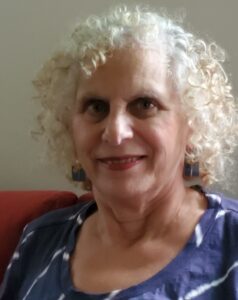By David Wilkening, Contributing Writer

REGION – When Julie Wittes Schlack and her husband Mark Schlack were in their 50s they didn’t consider themselves old. Not yet anyway. But around that time they began thinking seriously about when they would “really be old.” What to do when their ages were catching up to her parents, facing the limited choices in assisted living facilities?
They had what they called a “brilliant idea.” What if they could get together a group of like-minded people together to pool their resources to buy a building together in a non-institutional setting?
Six years later, Julie, 68, and Mark, 69, sold their larger home in Cambridge to buy a much smaller unit in the six-acre Village Hill Cohousing development in Northampton, which is near downtown. What they didn’t know when they actually tried out the concept of cohousing with different age groups living together is that it had already been practiced first in Denmark. It was becoming popular in the United States and particularly in areas such as Massachusetts.
An early introduction to the concept
So what did they find were the pros and cons of this newer choice of cohousing?
Wittes Schlack had an early introduction to a version of it. Her parents, whom she described as “vibrant, adventurous and sociable” were semi-pioneers of a type of cohousing.
“When I was a kid and still lived in Montreal, my parents and aunt and uncle jointly bought a summer house that our two families lived in together,” she said. Wittes Schlack is a writer whose books include the memoir “This is All-at-Onceness” and the novel “Burning and Dodging.”
“Not only did this mean that my brother and I had the benefits of growing up with three cousins who were like siblings to us, but we had a second set of parents,” she said.
Their idea of cohousing aroused interest among Boston-area friends. But actually doing it created problems. Friends couldn’t agree on where to live, for example. And there were conflicts over priorities such as public transportation and distances from individual families.
In investigating cohousing, Wittes Schlack found the idea started in 1966 in Denmark when Jan-Gudmand-Hoyer and five friends purchased a building site on the outskirts of Copenhagen. The United States is now home to 165 cohousing developments with 142 underway, according to the not-for-profit Cohousing Association of the United States. They define it as a “Housing development that involves people living around a common building with shared open space and neighbors collaboratively managing common areas.”
There are no “cookie-cutter” rigid rules for an exact structure of cohousing. Some units have age requirements or breakdowns of eligible residents in other ways.
Cohousing has similarities to condo life

Many compare the communities generally to condo complexes. Wittes Schlack found in a Boston Herald article a good comprehensive description: “involves anywhere from 15 to 40 individually owned homes clustered around a common house―the gathering place for shared meals, meetings and celebrations. But unlike people living in traditional condos, residents work five to ten hours a month at tasks such as landscaping, preparing group meals and babysitting.”
The work requirement lowers costs and condo fees. “But more importantly, it fuels emotional investment in the community, strengthening mutual-aid muscles and ensuring frequent, easy opportunities to interact with others,” she noted.
With its emphasis on sociability and a helpful tendency to lessen older individuals’ isolation, it’s no wonder the concept has been gaining popularity. It offers a lot of advantages such as often lower prices (partly because of the work requirement), cleaner developments with lower carbon emissions, and a more democratic structure. And more congenial surroundings. And perhaps more stimulating.
So suggests Craig Ragland, executive director of the Co-Housing Association.
“Massachusetts has become one of the hotbeds of cohousing,” he said, ranking fourth among states with almost a dozen new developments underway.
Why here?
Ragland points to the state’s highly-educated, progressive-minded populace. And to having architects and developers around who are familiar with the model, which often takes far longer to complete than usual housing projects.
Resident diversity is a major positive
Wittes Schlack said if there was one word to define a major advantage of projects such as her Northampton home, it could be “diverse.”
“Residents range from a man who is 86 years old to a child of nine,” she explained. The diversity offers advantages for all age groups, with younger members able to help older ones with physical chores such as climbing ladders to change light bulbs. Older members, in turn, offer such services as babysitting.
The development offers a mix of married, single, straight and gay people and some ethnic diversity as well. Member professions include everything from teachers to writers, to lawyers and dog groomers. Easy socializing has been a major attraction. Residents walk dogs, trade books, listen to music together, even bring food to ailing neighbors.
“We’ve been in more neighbors’ homes and had more of them to our own home than we did in 38 years on our old block in the city,” she said.
The disadvantages
Disadvantages she has found include meetings or the number of them to get things done. “There are meetings and more meetings. If you don’t like meetings, you won’t like it here,” she cautioned.
Other disadvantages include price, which can be too high for younger members in part because many cohousing developments are often in pricier suburban areas.
One other disadvantage city by Wittes Schlack is “missing the big city. But we still visit friends there when we can,” she said.
Her own parents late in life lived on their own in a rental apartment in Florida and eventually moved to assisted living. Wittes Schlack and her husband plan eventually to move into a semi co-housing setting in Somerville. She concluded: “My mother would have been very happy to see where and how we landed out here in Northampton.”












